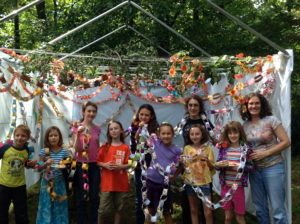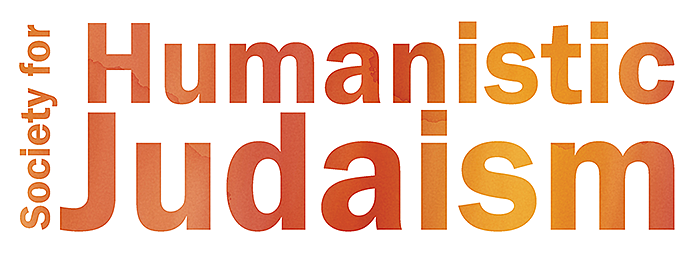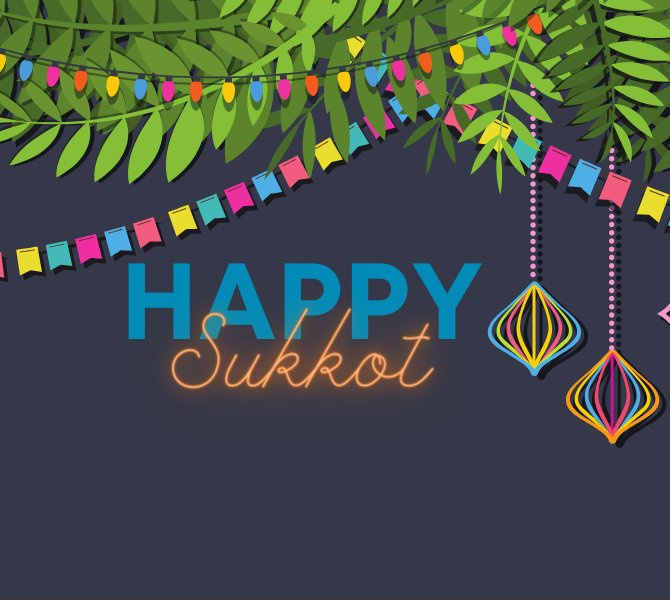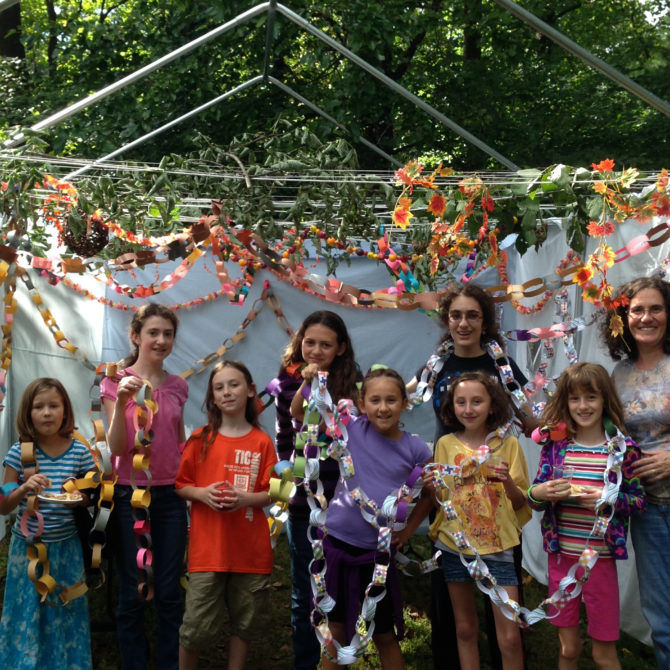
Sukkot is an eight-day fall harvest festival. Literally meaning “booths,” the central ritual of the holiday is building a sukkah, which commemorates the temporary huts built in the fields for shelter during the harvest (rather than walking all the way home). The sukkah is decorated with branches and fruit, symbols of the season, along with fun artwork.
Sukkot offers an opportunity in the fall for communities to come together intergenerationally, to build and decorate the sukkah and experience the out-of-doors. We recognize the interconnectedness of humanity and the earth and acknowledge responsibility for the environment.  The sukkah becomes the center of an outdoor celebration to share a meal or a snack under a roof open to the sun or stars.
The sukkah becomes the center of an outdoor celebration to share a meal or a snack under a roof open to the sun or stars.
Humanistic Jews use the ancient symbols of Sukkot – the lulav (a date palm branch tied together with myrtle and willow) and the etrog (a fragrant citron) – as thankful symbols of the harvest season and connections to our heritage.
.



